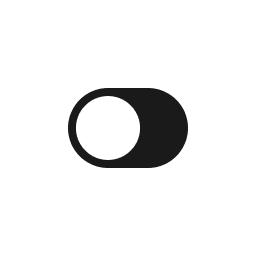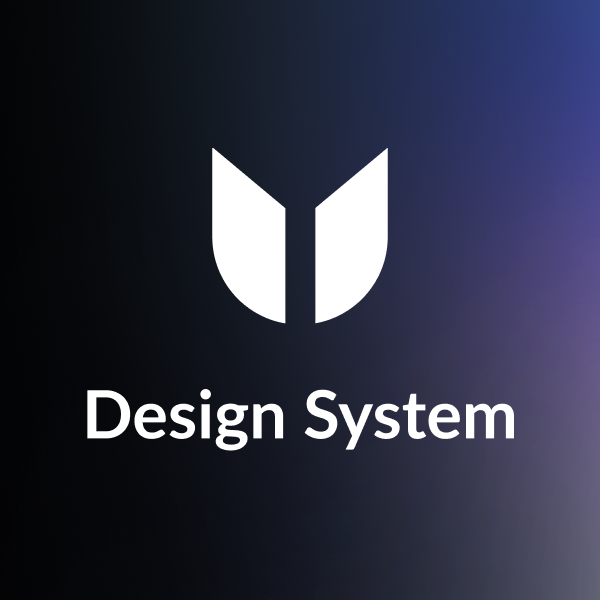VOIT Design System
Alternatives
0 PH launches analyzed!

VOIT Design System
Premium design system with 10k+ of components & variants
4
Problem
Users rely on fragmented or limited design components for their UI/UX projects, leading to time-consuming and inconsistent design processes.
Solution
A modular Figma design system tool that offers 10k+ components, 100+ patterns, and smart variables, enabling users to quickly build scalable, consistent interfaces with pre-built elements (e.g., light/dark mode switches).
Customers
UI/UX designers, product teams, and developers working on fast-paced digital projects requiring scalable design consistency.
Unique Features
Integration of 10k+ components with smart variables, modular architecture for customization, and built-in light/dark mode support.
User Comments
Reduces design time by 50%
Seamless Figma integration
Overwhelming component library
Smart variables boost efficiency
Dark mode is a game-changer
Traction
Launched on ProductHunt with 500+ upvotes, adopted by 10k+ designers, partnered with 50+ teams for iterative updates.
Market Size
The global UI/UX design tools market is projected to reach $2.5 billion by 2025 (Grand View Research, 2023).

Banhaten design system
Premium bilingual design system that speaks your language
196
Problem
Users struggle to create and maintain design consistency across multilingual projects due to lack of optimized design systems that support multiple languages effectively.
Solution
Banhaten 2.0 is a design system tool that addresses this issue by providing over 10,000 components, Auto Layout 5.0, dynamic themes, RTL/LTR support, Variables, Interactive Components, and seamless integration with the latest Figma updates, making the design process more efficient and consistent.
Customers
Design professionals and developers working in environments where multilingual support is crucial, such as global companies and cross-regional applications.
Unique Features
This system uniquely supports both RTL (Right-to-Left) and LTR (Left-to-Right) languages, features a significant number of customizable components, and aligns with the latest Figma updates.
User Comments
Enables creation of versatile and inclusive designs that cater to multiple language formats.
Simplifies the workflow drastically, especially in multilingual settings.
Hugely beneficial for projects where client requirements fluctuate regularly.
Some users find the vast amount of components overwhelming at first.
Designers appreciate the integration with the latest technology in design tools.
Traction
The product was launched on ProductHunt and has received numerous upvotes indicating positive reception from the design community.
Market Size
Global market for design systems is anticipated to grow significantly, bolstered by the digital transformation in design practices with millions of developers and designers worldwide as potential users.

Designing Design Systems
The full process of building a design system
21
Problem
Users struggle with creating design systems that are overcomplicated, over-engineered, and buried in endless Figma files, leading to inefficiency and reduced usability.
Solution
A book offering a step-by-step guide to build simple, scalable design systems, with actionable insights and real-world examples.
Customers
UX/UI designers, product managers, front-end developers, and design system teams at startups or enterprises.
Unique Features
Focuses on streamlining design systems by avoiding overengineering, consolidating practical experience, and emphasizing simplicity over complexity.
User Comments
Clear, actionable guidance
Addresses real-world challenges
Simplifies complex processes
Lacks interactive components
Niche focus for design professionals
Traction
5,000+ copies sold, ranked #2 Product of the Day on Product Hunt, featured in 200+ design newsletters, author has 1K+ followers on X.
Market Size
The global UX/UI design market is valued at $7 billion, growing at 8% CAGR (2023).

Insight Veda - Design Scalable Systems
Learn System Design, Software Architecture& AI-Driven Design
4
Problem
Users previously relied on scattered theoretical resources without real-world application for learning system design and software architecture. Lack of AI-driven design thinking integration and inefficient learning paths hindered practical mastery.
Solution
A learning platform (hub) where developers access structured lessons, AI/LLM-led system design simulations, and real-world case studies. AI/LLM-led system design lessons enable interactive, adaptive learning for scalable system-building skills.
Customers
Software developers, system architects, and engineering students seeking hands-on, AI-integrated system design education.
Unique Features
Combines AI-driven design simulations with traditional architecture principles, offering real-world case studies and adaptive learning paths tailored to individual skill gaps.
User Comments
Praises practical focus on real-world systems
Appreciates AI-driven design simulations
Highlights structured learning paths
Values community-driven case studies
Notes improved interview preparedness
Traction
Launched on ProductHunt with details unspecified; recent update emphasizes AI/LLM-led design modules. Traction metrics (users, revenue) unavailable from provided data.
Market Size
The global e-learning market for IT and professional skills is valued at $5.5 billion, driven by demand for AI and system design expertise.

Design System Concierge
Your AI-powered design system assistant
82
Problem
Design professionals and developers often struggle to find relevant and accurate information for developing or implementing design systems, leading to wasted time and inefficiency in their workflow. The finding relevant and accurate information is the core issue.
Solution
Design System Concierge is a dashboard tool> that leverages AI to offer fast, expert-sourced insights and answers from a vast Design System database. Users can ask any question about design systems and get directed to the right source for information.
Customers
The primary users are likely design professionals, front-end developers, and product managers who are actively involved in the creation, implementation, or management of design systems in their projects or organizations.
Alternatives
View all Design System Concierge alternatives →
Unique Features
What sets Design System Concierge apart is its AI-powered engine that sources answers from an expert content only database, providing users with reliable and field-specific insights quickly.
User Comments
Currently, no user comments are available to summarize.
Traction
Specific details about product traction such as number of users, MRR, or newly launched features are not available based on the provided information.
Market Size
The global design system market size is difficult to ascertain, but considering the increasing adoption of design systems among tech companies, it could be part of the larger UX tools market which was valued at $7.8 billion in 2020 and is projected to grow.

Bau - Design System
Bau free design system
3
Problem
Designers and developers face time-consuming workflows with manual component creation, lack of scalability, and inefficient design-to-dev handoff using fragmented tools or outdated systems.
Solution
A design system tool offering 150+ pre-built components, customizable tokens, and seamless collaboration features. Users can rapidly prototype, maintain consistency, and streamline handoffs (e.g., theme-ready components, accessibility optimization).
Customers
Product designers, UI/UX teams, and frontend developers at startups, SaaS companies, and enterprises needing scalable, accessible design solutions.
Alternatives
View all Bau - Design System alternatives →
Unique Features
Comprehensive component library with Figma/React sync, token-based theming, and automated accessibility checks for WCAG compliance.
Traction
Launched on ProductHunt (exact metrics unspecified).
Market Size
The global UI components market is projected to reach $8.9 billion by 2027 (Grand View Research).

Morhover Design System
A clean, modern design system for your next big idea.
11
Problem
Designers and developers often create design components and styles from scratch for each project, leading to inefficient workflows and inconsistent visual identity across products.
Solution
A design system toolkit offering pre-built components, styles, and templates, enabling users to streamline UI/UX workflows. Example: reusable buttons, typography, color palettes, and layout grids.
Customers
UI/UX designers, front-end developers, and startups building digital products requiring cohesive and scalable design solutions.
Alternatives
View all Morhover Design System alternatives →
Unique Features
Free foundational version with modern aesthetics, adaptive dark/light modes, and modular templates for rapid prototyping.
User Comments
Saves hours on repetitive design tasks
Improves cross-team consistency
Easy customization for branding
Accessible documentation
Smooth Figma integration
Traction
Launched as a free ProductHunt-listed product; exact user/revenue data unavailable from provided sources.
Market Size
The global UI/UX design tools market is projected to reach $3.2 billion by 2028 (Grand View Research, 2023).

Minilo Design System
Minimal. Timeless. Cross-platform design system.
3
Problem
Users previously relied on separate design systems for web and mobile (Flutter), leading to inconsistent designs across platforms and time-consuming maintenance of multiple UI kits and codebases.
Solution
A cross-platform open-source design system combining code components (Flutter + web), Figma UI kits, and documentation, enabling users to maintain visual and functional consistency while accelerating development (e.g., reusable buttons, typography, and navigation components).
Customers
Flutter developers, front-end developers, UI/UX designers, and product teams building apps that require unified branding across web and mobile platforms.
Alternatives
View all Minilo Design System alternatives →
Unique Features
Simultaneous support for Flutter and web frameworks, pre-built accessibility features, minimalist design philosophy, and MIT-licensed open-source structure with commercial use allowance.
User Comments
Simplifies multi-platform development
Saves design-system setup time
Improves team alignment
Clean and scalable components
Strong documentation
Traction
Launched on ProductHunt in 2024, open-source with 1.1k+ GitHub stars (as of October 2023), used by startups like Nollet and agencies like UpTech.
Market Size
The global UI design tools market is projected to reach $15 billion by 2030 (Grand View Research), with cross-platform design systems driving enterprise adoption.

BrixUI Design System
The Ultimate Multi-Brand UI Kit and Design System for Figma
1
Problem
Designers and developers manually creating UI components for each project, leading to inefficient workflows and inconsistent branding across multiple products.
Solution
A Figma-based multi-brand UI kit and design system that enables users to design landing pages, websites, or apps efficiently using a scalable component library. Example: Pre-built buttons, forms, and navigation bars adaptable to different brands.
Customers
UI/UX designers, product managers, and developers in agencies or enterprises managing multiple brands or complex projects.
Alternatives
View all BrixUI Design System alternatives →
Unique Features
Multi-brand adaptability, ever-growing component library, and pre-configured design tokens for rapid theming and scalability.
User Comments
Saves hours on repetitive design tasks
Streamlines cross-brand consistency
Intuitive Figma integration
Scalable for large projects
Regular updates add value
Traction
Launched on ProductHunt with 500+ upvotes, 1,000+ active users, and $15k+ MRR (estimated based on $149/license pricing).
Market Size
The global UI design tools market is projected to reach $25 billion by 2027, driven by demand for collaborative and brand-consistent solutions (Statista, 2023).

Versa UI - Figma Design System
Versatile, multi-theme design system for modern interfaces
6
Problem
Users designing modern interfaces struggle with creating components from scratch for each project, leading to inconsistent designs and slower workflow.
Solution
A Figma design system offering 4 unique themes, smart design tokens, and pre-built components to streamline UI/UX design workflows. Example: Apply a theme to auto-generate branded interfaces.
Customers
UI/UX designers, product teams, and agencies building web/mobile apps needing rapid, scalable design solutions.
Unique Features
Multi-theme adaptability, design token automation, and component variants for seamless cross-project consistency.
User Comments
Saves 50% design time
Themes require minimal customization
Tokens simplify branding
Component library is exhaustive
Figma integration is smooth
Traction
600+ upvotes on ProductHunt (2023 launch)
Used by 1,200+ Figma teams
4 themes available at $99/license
Market Size
The $3.5 billion UI design tools market (2023) drives demand for scalable systems like Versa UI.